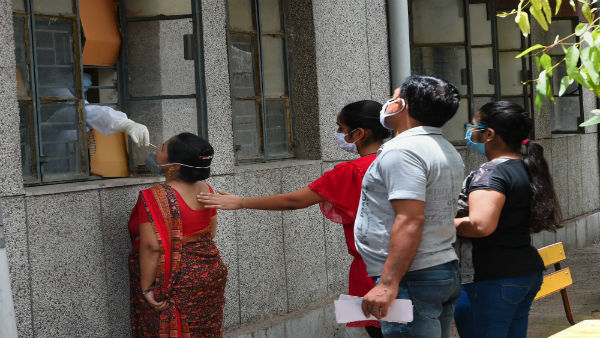
COVID: Here are Health Ministry’s revised guidelines for home isolation
The revised Health Ministry guidelines apply to COVID patients who have very mild infection and are mostly asymptomatic

The Union Ministry of Health and Family Welfare (MoHFW) on Wednesday issued fresh guidelines for home isolation of COVID patients. These come amid a surge in Omicron cases across the country, and apply to patients who have been clinically assessed and categorised as mild/asymptomatic cases.
“Patients under home isolation will stand discharged and end isolation after at least 7 days have passed from testing positive and no fever for 3 successive days. There is no need for retesting after the home isolation period is over,” it said in a statement.
?@MoHFW_INDIA has issued revised guidelines for #HomeIsolation of mild/asymptomatic #COVID19 cases.
➡️For more details, read full document of revised guidelines here: https://t.co/MNnhBqbuhL #IndiaFightsCorona#We4Vaccine pic.twitter.com/OG0vcOa1Pz
— #IndiaFightsCorona (@COVIDNewsByMIB) January 5, 2022
For patients with mild or no symptoms
The home isolation recommendations are for laboratory-confirmed cases who are not experiencing any symptoms. Per MoHFW nomenclature, ‘clinically assigned mild cases’ are patients with upper respiratory tract symptoms with or without fever, without shortness of breath and having oxygen saturation at room air of more than 93%.
Also read: Third COVID wave has hit Delhi, 10K cases likely today: Satyendar Jain
A designated control room contact number at the district /sub-district level will be provided to the family of the patient so that they can be guided on testing, clinical management, and getting a hospital bed if the need arises.
The residence of the patient has to have the required facilities to support self-isolation for the patient as well as quarantining of family contacts. A caregiver — ideally someone who is fully vaccinated — should be available to take care of the patient 24×7. This person shall be in touch with the concerned Medical Officer (MO) through the duration of home isolation.
For senior citizens and those with comorbidities, home isolation will be allowed after proper evaluation by the MO. Immuno-compromised patients are not recommended for home isolation; if at all it’s needed the MO needs to evaluate the case first.
Treatment plan during isolation
Patients are required to be in touch with the treating MO. They need to be vigilant and alert the MO if the case deteriorates. The patient must continue taking medicines for existing illnesses and comorbidities. They can use the teleconsultation platform offered by the district/State administration, including the e-Sanjeevani platform.
The MoHFW recommends that patients follow symptomatic management for fever, running nose and cough; they can also perform warm water gargles or take steam inhalation thrice a day. Fever that does not come down with a 650 mg dose of paracetamol four times a day calls for a consultation with the MO.
The guidelines warn against self-medication, blood investigation or radiological imaging Iike chest X-ray or chest CT scan without the MO’s prescription.
When to worry
The Health Ministry says the patient or caregiver must seek immediate medical attention if serious signs or symptoms develop, such as unresolved high-grade fever (more than 100° F for more than three days), difficulty in breathing, or a dip in oxygen saturation (Sp02 < 93% at room air, at least 3 readings within 1 hour) or respiratory rate >24/ min.
Persistent pain/pressure in the chest, mental confusion or inability to arouse, and severe fatigue and myalgia (muscle pain) are also to be addressed with medical attention.

